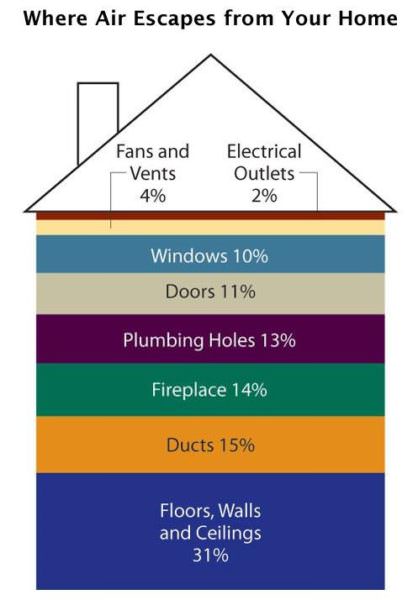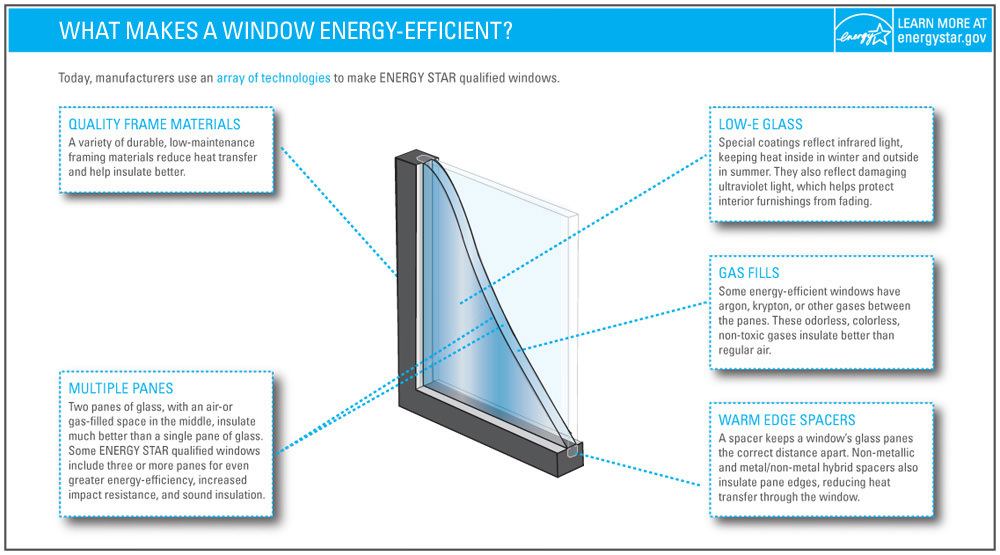Getting new windows is one of the most satisfying ways to improve your home’s efficiency. You save energy and your whole house will look nicer both from the street and indoors.
But unless you have really old single-pane windows, window replacement is probably not the most effective change you could make. Read on to find out if you really need new windows or if you could save more energy elsewhere in your home.
Return on Investment
For most homes, windows account for about 10% of energy loss. That’s significant, but so is the cost of new windows.

Installing an energy-efficient window can cost anywhere from $270 to $800 and you won’t notice a difference on your energy bill unless you replace all of your windows. Homeowners who install Energy Star windows save an average of 12% on their utility costs throughout the year. Upgrading old Energy Star windows for better new ones will not provide the same savings as upgrading to new windows.
Windows are not the biggest energy loss culprit. In fact, they are not even in the top five. If energy efficiency is your primary goal, there are other steps you should take first. Insulation is not as exciting as new windows and may cost just as much. But insulating your floors, walls, and ceilings can save three times as much energy. Sealing ducts can save half again as much as replacing windows and will do so at a fraction of the cost.

Sealing ducts can save half again as much as replacing windows at a fraction of the cost. Image source: Union of Concerned Scientists
These are averages though, and there are other things to consider that may affect your decision.
You might already have good insulation, a stray baseball may have made a window replacement necessary, or your windows might be exceptionally old. Some signs that it’s time to replace your windows include drafts, condensation on the panes, and mold or rot on the frames. For more certainty, you can use a home energy audit to determine whether to prioritize window replacement.
Making Do
If you are a renter, weatherizing your existing windows may be your only option. For homeowners who have double-pane windows that are not performing, especially if they are still under warranty, repairs may be the more sustainable choice. Replacing them might be more wasteful of resources than the difference in energy efficiency. Rotting sills and jammed sashes can often be repaired. Weatherstripping and new caulking can eliminate most drafts.
If you have an older house with original windows, you might want to keep them for architectural interest and to maintain the historical value of the home. You can make existing windows more energy efficient with a few DIY hacks. Window attachments, such as year-round storm windows, insulated curtains, exterior shading, and window films can be used to influence seasonal heat loss and heat gain.
Buying the Right Windows
Once you decide it’s time for new windows, you need to consider several factors. Energy Star-rated windows do not all perform equally. Consider the windows’ construction and materials. Although they can be improved by including a thermal break, inexpensive aluminum frames do not insulate well. Fiberglass frames generally perform better. Triple glazed windows provide maximum efficiency, but the added efficiency may not outweigh the cost premium. And low-E glass coatings that reflect infrared light can minimize heat transfer.
Image source: Energystar.gov
The right windows for your home will depend on your Energy Star Climate Zone, and might be different for different sides of your house. For example, in cold climates, south-facing windows should have a higher solar heat gain coefficient (SHGC) and a low U-factor to reduce heat loss. Windows that face east and west should have a low SHGC. In warmer climates, where heat gain is a bigger issue, you need a low SHGC for south, east, and west-facing windows.
Window installation is one home project where professional help is valuable. Many window warranties require professional installation. And if your home was built before 1978, there is a good chance that your windowsills have been contaminated with lead paint, which is best removed by a certified lead abatement professional.
What To Do With Old Windows
Although recycling old windows is not always easy, don’t undercut the benefits of your new windows by throwing the old windows away.
Building material reuse stores often accept windows, or you might be able to use your old windows in DIY projects like building a cold frame for the garden. You might even be able to turn them into solar panels. As a last resort, look for a construction and demolition (C&D) waste recycler to accept your windows.
The post Home “Eco”nomics – Window Replacement appeared first on Earth 911.








